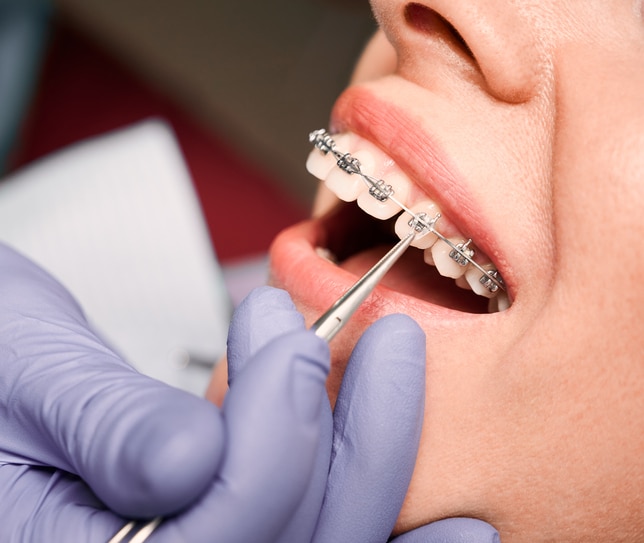Picking the most effective Cumming Orthodontics for Effective Braces and Aligners Solutions
Picking the most effective Cumming Orthodontics for Effective Braces and Aligners Solutions
Blog Article
Comprehensive Guide to Orthodontics Procedures for Remedying Dental Misalignments
Understanding the intricacies of each treatment, including their systems, benefits, and prospective drawbacks, is essential in making informed decisions about one's orthodontic therapy. As we browse with the extensive guide to orthodontic treatments for dealing with oral misalignments, the intricate details of each approach will certainly unfold, shedding light on the course towards a harmonious and functional dental alignment.
Orthodontic Procedures Overview

In addition to typical braces and clear aligners, orthodontists might also suggest various other interventions like headwear, palatal expanders, or retainers to address certain alignment problems (orthodontics). These procedures are customized to each individual's unique requirements and might entail a combination of therapies to attain the desired results. Normal adjustments and tracking are essential components of orthodontic therapy to ensure development gets on track and to make any type of essential modifications along the road. By undergoing orthodontic procedures, individuals can not just achieve a straighter smile yet additionally improve their general dental wellness and feature.
Traditional Braces: How They Work
When thinking about orthodontic treatments for oral misalignments, conventional braces stand apart as a time-tested method for correcting teeth positioning. Typical dental braces are composed of braces, wires, and bands that collaborate to use continuous stress on the teeth, slowly moving them right into the preferred placement. The brackets are connected to the teeth using an unique adhesive, and the wires are threaded with the braces. By changing the stress of the wires, orthodontists can manage the instructions and force related to each tooth, guiding them into correct alignment with time.
As pressure is applied to the teeth via the braces, the bone bordering the teeth is improved to support the brand-new tooth placements. Patients will need routine changes at the orthodontist's workplace to make sure the dental braces proceed to apply the appropriate pressure for effective teeth movement.
Unnoticeable Aligners: Cons and pros
Unnoticeable aligners offer a discreet and practical choice to typical dental braces for remedying dental misalignments. These clear, customized trays are practically invisible when worn, making them an enticing choice for individuals seeking an extra cosmetically pleasing orthodontic treatment. One of the key benefits of invisible aligners is their removability, permitting simpler upkeep of dental hygiene contrasted to standard braces. Patients can get rid of the aligners prior to consuming or brushing their teeth, lowering the danger of food getting embeded the home appliance and simplifying the cleansing process.

Surgical Orthodontic Options
Surgical interventions in orthodontics present practical alternatives for resolving intricate oral misalignments that might not be efficiently fixed with conventional orthodontic therapies. While unseen aligners and standard dental braces can remedy numerous orthodontic issues, particular cases need medical treatment to accomplish optimum outcomes. Surgical orthodontic alternatives are generally recommended for severe malocclusions, significant jaw inconsistencies, and instances where the underlying bone structure requires modification to accomplish correct alignment.
One usual medical orthodontic procedure is orthognathic surgical procedure, which entails repositioning the jaws to correct useful problems such as difficulty talking or eating. This surgery is usually done in collaboration with an orthodontist that find more information assists straighten the teeth before and after the procedure. Surgical orthodontics might also include procedures to subject impacted teeth, get rid of excess gum tissue, or improve the jawbone to create a much more harmonious face account.
Before taking into consideration surgical orthodontic alternatives, clients undertake a detailed evaluation to figure out the necessity and prospective advantages of such interventions. aligners. While surgical procedure may seem daunting, it can substantially boost both the function and looks of the smile in cases where traditional orthodontic therapies fail
Retainers and Post-Treatment Care

Post-treatment care involves complying with the orthodontist's directions faithfully. This may include correct oral health techniques, attending follow-up appointments, and using the retainers as recommended. Failing to follow post-treatment treatment guidelines can cause regression, where the teeth gradually relocate back towards their initial positions. Constant retainer wear, good dental health, and regular oral check-ups are vital for keeping the results accomplished via orthodontic surgery and guaranteeing the long-term security of the dealt with oral alignment.
Final Thought
In final thought, orthodontic procedures supply numerous choices for fixing oral imbalances. Conventional braces make use of metal braces and cables to shift teeth right into appropriate alignment. Unseen aligners supply a more very discreet option but might not appropriate for all instances. Surgical orthodontic alternatives are readily available for much more severe imbalances. Retainers are typically made use of post-treatment to preserve the brand-new alignment. On the whole, orthodontic procedures can properly enhance oral health and wellness and visual appearance.
As we navigate with the thorough guide to orthodontic procedures for dealing with oral misalignments, the detailed details of each technique will certainly unravel, shedding light on the path toward a functional and harmonious oral placement. - cumming orthodontics
One of the most common orthodontic treatments is the use of braces, which are composed of metal brackets and cables that use mild stress to gradually shift teeth into you could try here the preferred setting.When taking into consideration orthodontic therapies for oral imbalances, conventional braces stand out as a tried and true approach for dealing with teeth placing. Additionally, unnoticeable aligners may not be appropriate for complicated orthodontic problems that need more considerable teeth motion, as they are commonly advised for light to modest cases. Retainers are custom-made orthodontic devices developed to hold teeth in their fixed settings after the completion of orthodontic treatment.
Report this page